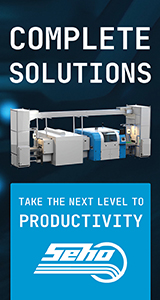|

|
|
| Ask the Experts | |||||||
|
|||||||
|
May 2, 2018 - Updated March 30, 2009 - Originally Posted Screen Print Shelf LifeWhat is the maximum allowable time for a PCB to leave after screen print but before reflow? We are using a water soluble lead-free paste. The PCB is densely populated with over 10,000 apertures and the PCB is .090 mil thick. R.W. |
|||||||
| Expert Panel Responses | |||||||
|
Since paste deposition or screen printing is not a critical delay time element in the process flow, I would not recommend screening the paste until the unit is ready for component placement. It will take much longer to place the components than it will to deposit the paste. With water soluble paste, I would be concern with the amount of moisture in the assembly area, as this chemistry is susceptible to the absorption of moisture which could impact its ability to reflow. Excess moisture will cause the paste to spatter during reflow. Secondly if the product is set aside prior to component placement the concern will be its tackiness, or its ability to hold and secure the component prior to reflow. I would not worry about the board thickness as I don't believe it has anything to do with the performance of the solder paste. There will be a large area of exposed solder paste which will dry out if the product is left out prior to component placement. The bottom line is place the components on the board as soon as possible after the paste deposition process and reflow the board.
Vice President, Technical Director EPTAC Corporation At EPTAC Corporation, Mr. Lambert oversees content of course offerings, IPC Certification programs and provides customers with expert consultation in electronics manufacturing, including RoHS/WEEE and lead free issues. Leo is also the IPC General Chairman for the Assembly/Joining Process Committee.
Usually we want people to reflow as soon as possible with water soluble pastes. If the Relative humidity isn't extreme, 30-50% then you should be able to wait up to 6 hours without an issue. Anything beyond that and you will have to check for yourself. The biggest problem is that the water soluble pastes are typically hydroscopic, thus in humid environments they will absorb water which will lead to issues like solder balling. Good luck
President FCT Assembly Mike Scimeca created FCT Assembly after the purchase of Fine Line Stencil, Inc., and consists of two major operations: stencil manufacturing and the manufacturing of electronic assembly products such as solder paste, flux and solder bar.
The answer to this is normally solder paste-dependent. Different formulas likely have varying abandon times. But, generally speaking, a water soluble print left in a 20-22 degree, 40-60% relative humidity room may give you 1-2 hours maximum. If the temperature and humidity are higher, then it could be as little as 1/2 hour.
Global Process Manager ASM Mr. Ashmore is responsible for the Global Applied Process Engineering group for DEK. Clive specializes in all aspects of manufacturing engineering, with special emphasis on mass imaging technologies.
Stencil and shelf life will be dependant completely on chemistries and formulations used in your paste choice. Some water soluble pastes offer 24 hour tack whereas others will be a number of hours. Please check your Technical sheets for guidelines.
Technical Sales Manager BLT Circuit Services Ltd Greg York has over thirty two years of service in Electronics industry. York has installed over 600 Lead Free Lines in Europe with Solder and flux systems as well as Technical Support on SMT lines and trouble shooting.
The answer is both solder paste and environment specific. The rate at which thesolder pastedries out due to flux evaporation and is chemically damaged due to water absorption can vary in the extreme from case to case. Your solder paste vendor should be able to provide some guidance.
Application Engineering Supervisor Nordson EFD Mr. Vivari has more than 15 years of electronic engineering design and assembly experience. His expertise in fluid dispensing and solder paste technology assists others in identifying the most cost effective method for assembling products.
|
|||||||
| Submit A Comment | |||||||
|
Comments are reviewed prior to posting. You must include your full name to have your comments posted. We will not post your email address. |
|
Free Newsletter Subscription
Circuitnet is built for professionals who bear the responsibility of looking ahead, imagining the future, and preparing for it. Insert Your Email Address |
|

|






